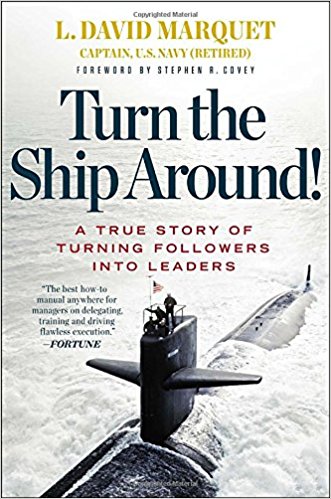“I intend to …, and …”
I was co-training an Agile for Teams workshop with Rob Myers last week. This group had been trying to do Scrum, with some success. Our job was to help them solidify their Scrum practice. I love workshops like these. There’s enough knowledge and experience in the room that if willing to learn, can create a huge uptick in satisfaction and performance. Fertile ground for the ‘aha’ moments!
At one point the managers left the room so that the teams could, without fear, talk about what they were going to do differently going forward. The  managers suggested they leave. A nice move on their part, and one btw I hope in the future they don’t have to repeat as the organization embraces the Scrum Values. But given where they were in the journey, it was a great offer.
managers suggested they leave. A nice move on their part, and one btw I hope in the future they don’t have to repeat as the organization embraces the Scrum Values. But given where they were in the journey, it was a great offer.
When the teams had talked about what they had learned and what they thought they might do differently, we debriefed a bit. It was a great conversation, with a lot of the ‘aha’ learnings. However, for me there was a lack of clear action as an outcome of the debrief. I asked, “When the managers return, what do you want to tell them?”
One person spoke up right away. He basically stated that they wanted to do Scrum well, however, he felt they needed to know if the managers really intended for the organization to do Scrum. There was a reasonable amount of acknowledgement in the room.
Interesting, I thought. My reactive-self thought wanted to say, “Here you are taking a workshop WITH the managers, a very clear investment of time and money, and you’re asking that question?” But I’ve learned to think reactive internally, and then try to act creatively and didn’t say that. Instead I asked, “What would you ask of them?” The response was, “Are we going to do Scrum, yes or no?”
Well now I reacted. I said, “Wrong question.” Truth is I too would probably have asked the same question. However, it struck me that given the context the answer would obviously be “yes”. So, nothing new, nothing gained. And something in my psyche said, “wrong question”.
A bit of personal history. I was promoted to a managerial position way back in 1987. Yep, I’m an old guy. Oldest member of Agile For All as a matter of fact.  I was a manager for literally decades ending my enterprise career in 2008, having reached a VP of Development position. In all those years, often when we were trying something new, I would get that question; “Are we really going to do this?” I often wondered if they felt like I needed to take lie detector test! The simple answer was always “yes”; although, in many cases I wanted to say “Are you kidding me? What do you expect me to say after all this? No!?”
I was a manager for literally decades ending my enterprise career in 2008, having reached a VP of Development position. In all those years, often when we were trying something new, I would get that question; “Are we really going to do this?” I often wondered if they felt like I needed to take lie detector test! The simple answer was always “yes”; although, in many cases I wanted to say “Are you kidding me? What do you expect me to say after all this? No!?”
So, as I looked into the eyes of someone who genuinely wanted to do Scrum AND also needed something from the managers, I paused and thought. As a manager, what would I want to be asked? What would move the initiative forward?
The fact of the matter is that as a manager you can’t make things happen. They can paint a vision, create the environment, plead the case; however, they can’t do it themselves. They must reach the hearts and minds of the people in the organization…hearts and minds. That means the people in the organization must own it. For this class, the hearts appeared to be won. Therefore, the question was not whether the proverbial ‘we’ were going to do Scrum, the question was if we, the teams, are going to Scrum, what did that mean?
I reassured the person asking the question that I understood what he needed. I then offered that as a past manager I would simply reply to that question with ‘yes.’ That instead, as a manager it would be stronger to be told what the teams were going to do. What did they need from me as the manager? What were they committing to do, and in this case, do differently? Don’t ask if me if we’re going to Scrum, tell me how we’re going to start doing it.
Well that created a whole different conversation that generated clear, actionable requests. I felt good. The class felt good. Yeah!.
 As I was flying home, I reflected on that moment in class. What came to mind is a great book by David Marquet, “Turn the Ship Around!” It’s often used as a resource when coaching managers on how they can better lead. Marquet’s whole journey began by realizing he needed to delegate and empower the submarine’s crew. “I intend to…” is the reframe that Marquet told people to use in taking action.
As I was flying home, I reflected on that moment in class. What came to mind is a great book by David Marquet, “Turn the Ship Around!” It’s often used as a resource when coaching managers on how they can better lead. Marquet’s whole journey began by realizing he needed to delegate and empower the submarine’s crew. “I intend to…” is the reframe that Marquet told people to use in taking action.
However, a manager often needs more than just “I intend to…” As Marquet learned about delegating, he added a couple of follow-on responses to “I intend too…” that help him AND the person taking the action learn and ensure the decision was sound. For example, “I intend to dive the ship” would be a good if all the crew is safe below deck.
If you think about it from a different angle, this is also a lesson for team members to learn how to take initiative and act as well.
What would this look like in business, and in the domain of doing Scrum? While a manager can’t make things happen, they also have a lot of the accountability for the results. Help them. Offer “I intend to…”, and be clear on what you intend to do. Additionally, tell them what you expect the result to be. Tell them how you’ll know. Tell them of any risk and how it might be mitigated, or how you’ve evaluated that risk.
As a manager if I people take that approach, I’d fell included, safe, collaborative, and would be grateful. We’d also get stuff done!





[…] The full article is available here. […]
I like this story. I think some people need to hear that their managers support them. I also think it’s important for the manager to ask the questions you mentioned like “What does the team plan on doing different now”. The “I intend to..” mentality is a good thing for everyone to learn and think about. When starting a new habit we have intentions to try and change something. Reminding yourself of those intentions when performing the new habit helps reenforce the habit.